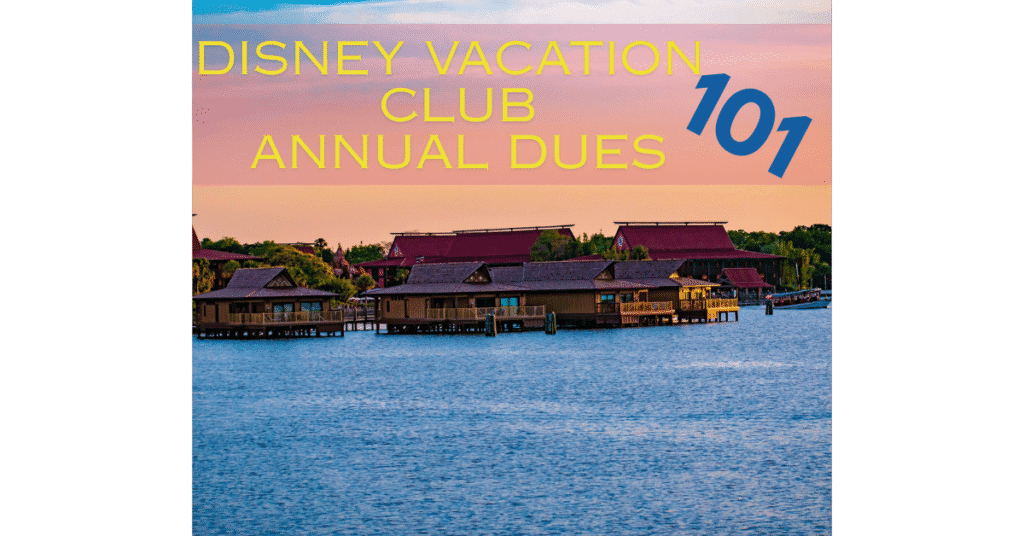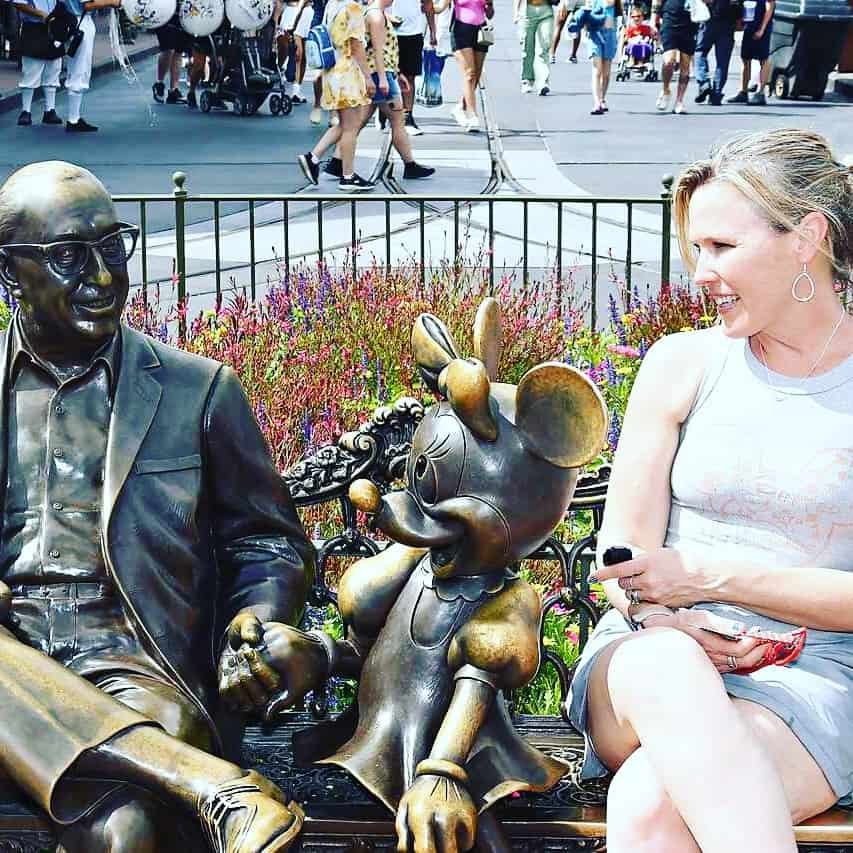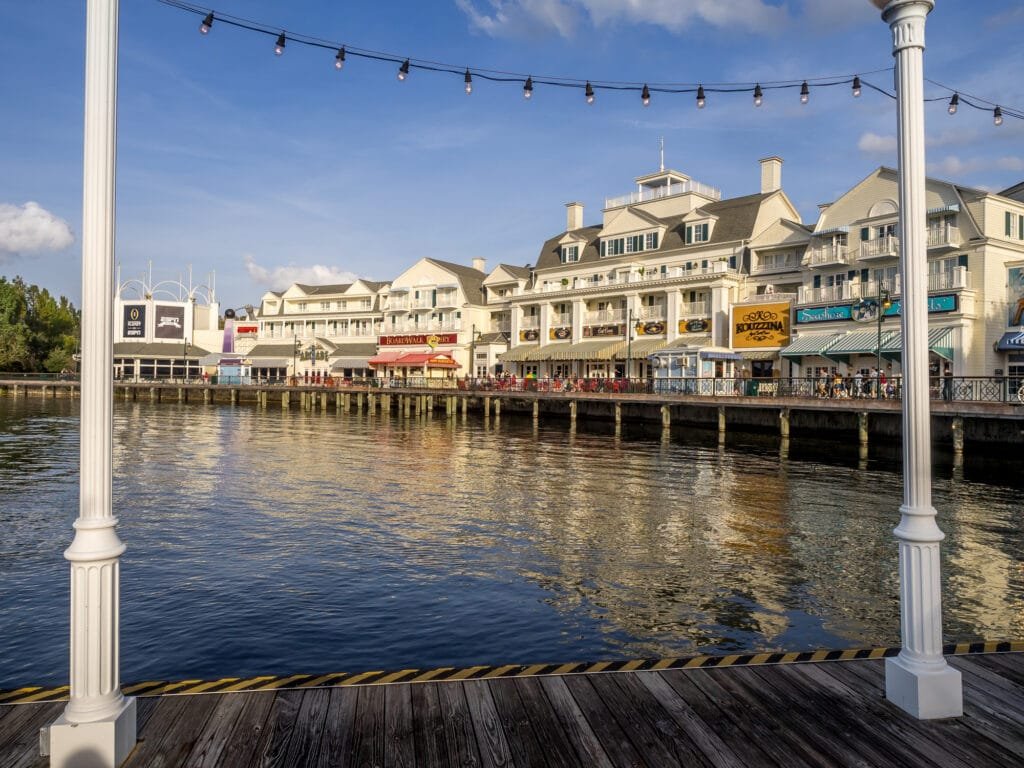Disney Vacation Club is magical- yet confusing. Here’s your go-to blog on all things Disney Vacation Club- Annual Dues, Properties, Use Years, and More!
11 Must-Know Facts about Disney Vacation Club Annual Dues!
Thinking about joining the Disney Vacation Club (DVC)? While the initial purchase price might grab your attention first, understanding the annual dues is equally important for long-term planning. These ongoing fees ensure your magical home away from home stays in tip-top shape!
Disney Vacation Club, Disney’s Time Share program at its Deluxe Resorts, is an opportunity to buy into the magic- while potentially saving you money on years of Disney vacations! But it’s not to entered into lightly as there are additional fees and costs to consider.
Let’s dive into everything you need to know about Disney Vacation Club annual dues before making this significant investment.
1. Disney Vacation Club Annual Dues Calculation
DVC annual dues are calculated based on the size of your ownership interest (termed “points”) and the specific resort you own (also termed your “home resort”). The calculation is done on a per-point basis, meaning the more points you own, the higher your total dues will be.
For example, if you own 150 points at Disney’s Animal Kingdom Villas, where the 2025 dues rate is $9.64 per point, your annual dues would be $1,446 (150 × $9.64). This calculation method ensures that members contribute proportionally to the maintenance of their home resort.
Disney Vacation Club Annual Dues vary per resort- more on this later!
2. Coverage of Costs
Your annual dues aren’t just random fees—they cover essential aspects of maintaining your DVC resort. These costs include:
- Operating costs (housekeeping, front desk, maintenance)
- Administrative expenses (member services, reservation systems)
- Real estate taxes based on your ownership interest
- Refurbishment expenses for future renovations
- Maintenance of common areas and amenities
- Insurance costs for the property
Understanding what your dues cover helps explain why they’re necessary for preserving the long-term value of your DVC membership. The reason the costs differ so much is due to the level of difficulty or upkeep each property requires. For example, beachfront property like Disney’s Vero Beach Resort or Hilton Head Resort, incur higher dues due to their risk for hurricane damage from coastal storms.
More on this in fact #4.
3. Yearly Dues Variability
One important fact about DVC annual dues: they typically increase year over year. The average increase historically ranges between 2-6% annually, though some years may see higher jumps due to special assessments or major refurbishments. They also vary from location to location, as noted above.
These increases reflect rising costs of labor, materials, and general inflation affecting the hospitality industry. For instance, from 2024 to 2025, most resorts saw increases between 3.6-6.2%, with some experiencing more significant increases due to scheduled renovations (more on this later).
4. Disney Vacation Club Annual Dues Structure
Each Disney Vacation Club resort has its own unique dues structure, resulting in considerable differences between properties. Newer resorts like Disney’s Riviera Resort often have lower dues initially, while older resorts like Old Key West or Vero Beach typically have higher dues due to ongoing maintenance needs.
The resort name matters significantly when considering dues—properties with more elaborate theming, extensive water features, or unique amenities generally command higher dues. For example, Bay Lake Tower at Disney’s Contemporary Resort or Copper Creek Villas & Cabins at Disney’s Wilderness Lodge have different dues (actually lower) than the The Cabins at Fort Wilderness despite both being located at Walt Disney World. Surpisingly, The Cabins even though they are new and much farther from the parks, have some of the highest DVC dues of them all (only outdone by the beachside resorts)!
5. DVC Member Responsibilities
As a DVC owner, you’re responsible for paying your annual dues regardless of whether you use your points that year. Dues can be paid in a lump sum at the beginning of the calendar year or through monthly installments using various payment methods which include:
- Credit card
- Debit card
- Electronic funds transfer
- Monthly automatic payments
Failure to pay dues can result in late fees, inability to book reservations, and potentially even foreclosure on your membership. Many members set up monthly payment plans to spread out the cost throughout the year (this is what we do and it makes it a lot easier, in my opinion).
Of note you can’t pay for DVC Member dues with Disney Gift Cards. This may have been true in the past but it’s not the case now.
6. Dues cost per Disney Vacation Club Resort
The cost of annual dues varies significantly across different DVC resorts. Here’s a breakdown of the current dues rates for all Disney Vacation Club resorts (2025 figures):
-
Animal Kingdom Villas – $9.6470/pt (+6.22%)
-
Aulani (Hawaii) – $10.1219/pt (+3.69%)
-
Aulani (subsidized, pre‑July 27 2011) – $7.6090/pt (+3.69%)
-
Bay Lake Tower – $8.0150/pt (+5.60%)
-
Beach Club Villas – $9.1207/pt (+5.74%)
-
BoardWalk Villas – $9.0570/pt (+4.45%)
-
Boulder Ridge Villas – $9.1885/pt (+5.87%)
-
Copper Creek Villas & Cabins – $8.4914/pt (+4.91%)
-
The Cabins at Fort Wilderness – $11.8769/pt (–2.28%)
-
Grand Floridian Villas – $7.9298/pt (+4.70%)
-
Old Key West Resort – $10.5049/pt (+6.47%)
-
Polynesian Villas & Bungalows – $7.9263/pt (–3.69%)
-
Riviera Resort – $9.0572/pt (+2.33%)
-
Saratoga Springs Resort & Spa – $8.5394/pt (+4.92%)
-
Disneyland Hotel (The Villas) – $9.8207/pt (+3.04%)
-
Grand Californian Villas – $8.7974/pt (+2.84%)
-
Vero Beach Resort:
-
Pre‑1996 contracts: $11.2374/pt (+3.18%)
-
Post‑1996 contracts: $14.3026/pt (+3.17%)
-
-
Hilton Head Island Resort – $11.9207/pt (+5.36%)
For the most current dues information, check the DVC Resale Market annual dues page.
7. How Use Years work
A use year is a fundamental concept in DVC membership that affects when your points are allocated and when they expire. Your use year is the month when your annual allotment of DVC points becomes available for booking vacations.
For example, if you have a September use year, you receive your new points every September 1st. These points are valid for booking vacations during the following 12 months, plus a 12-month grace period if you bank them.
What this means is that if you don’t plan to use that year’s alloted points you must bank them. You have the first eight calendar months of your Use Year to bank that Use Year’s points into the next Use Year. For example, with a February Use Year, you must bank by end of September; with a June Use Year, by the end of January.
Understanding your use year is essential for maximizing point value and avoiding expiration dates. It affects banking and borrowing deadlines, helping you plan your Disney vacations more effectively.
8. How RCI exchange works
Beyond the Disney properties, DVC members can exchange their points through RCI (Resort Condominium International) to access over 4,000 resorts worldwide. When using RCI exchange:
- DVC points maintain their value based on your home resort
- Exchanges require a fee in addition to the points used (though many years Disney opts to waive these fees)
- Booking windows typically open 10 months in advance
- Point requirements vary based on destination, season, and unit size
This flexibility allows you to explore beyond Walt Disney World and other Disney Vacation Club resorts while still utilizing your ownership, but it’s not always the best use of points. That being said I have occasionally been able to score some great last minute vacations using points that were going to expire, but that’s not the norm.
9. Dues Rates
Understanding historical annual dues can help you project future costs. Over the past decade, average dues increases have typically ranged from 2-6% annually, though individual resorts may experience higher increases during years with major refurbishments.
The year-over-year change in dues is influenced by several factors:
- Inflation and rising labor costs
- Scheduled renovations and upgrades
- Property tax assessments
- Insurance premium adjustments (i/e storms, hurricane damage, etc.)
- Energy and utility cost fluctuations
Members can learn about proposed increases for the upcoming year at annual condominium association meetings, typically held in December. These meetings provide transparency about the factors driving dues changes (well some transparency, there’s always some mystery to it).
But you don’t have to attend the meetings, the info is readily available after the meeting on sites like DVCResaleMarket.com
10. Cost Breakdown
Your total annual dues can be broken down into specific categories that help explain where your money goes:
- Operating Fund (40-60%): Day-to-day operations including housekeeping, front desk, and maintenance
- Capital Reserves (20-30%): Savings for future renovations and major repairs
- Property Taxes (15-25%): Based on your ownership stake
- Administration (5-10%): Member services and management costs
This breakdown varies by resort, with properties like Disney’s Grand Floridian Resort & Spa potentially having different allocations than a resort like Vero Beach due to their unique operational requirements.
11. Common Trends in DVC
Several important trends are worth noting regarding recent and ongoing DVC annual dues adjustments:
- Older resorts typically experience higher increases as they require more maintenance
- New resorts, in the past, often started with lower dues that increase more significantly in the early years. However, as noted above we see that the Cabins at Fort Wilderness have recently seen a reduction rather than a rise in annual dues. This may be due to difficulty selling them, or perhsaps they were overestimated initially.
- Special assessments may occasionally be needed for unexpected repairs, it’s hard to predict when this will happen therefore hard to plan for
- Resorts with more elaborate theming and amenities generally command higher dues
- Operational costs at non-Florida locations like Aulani or Hilton Head often differ significantly from Walt Disney World resorts
These trends can help prospective buyers choose between a direct purchase from Disney or buying on the resale market where higher dues at certain resorts might offset the lower upfront purchase cost.
The Wrap Up
Disney Vacation Club annual dues represent an ongoing commitment beyond the one-time cost of joining, so planning this into your budget is essential. While they add to the overall cost of ownership, they also ensure that your particular resort maintains the Disney standard of excellence for years to come.
Before purchasing, carefully consider both the initial buy-in cost and the projected annual dues over your membership lifetime. For many families, the value of guaranteed accommodations for future Disney vacations outweighs these costs, especially when considering what comparable deluxe accommodations would cost when booked directly (much, much more!).
Whether you’re looking at a studio unit at the Polynesian or a grand villa at Animal Kingdom, understanding your dues, how far hey will go, and how much they can vary is an important part of this unique vacation ownership program.
Remember that while dues increase over time, so do hotel rates—making your DVC membership potentially more valuable with each passing year!
This blog was all about Disney Vacation Club Annual Dues and how to make sense of them, and plan for them!
You may also love:
11 Best Off-Site Disney World Hotels in 2024
Quick Resort Guide: Disney World Boardwalk Villas Floor Plan

Shelley has been going on Walt Disney World trips since she was a toddler growing up in South Florida. Since then, she has expanded her interests and passion to include Disneyland and runDisney trips. She is a Disney College of Knowledge-certified Travel Planner, runner, Physician, mom of three, and all-around Disney fan. She believes the magic is in the details of any Disney or runDisney trip!







Leave a Reply
You must be logged in to post a comment.